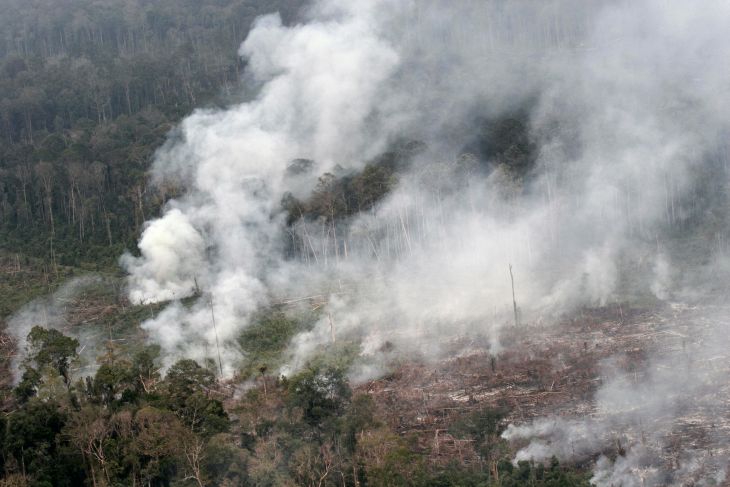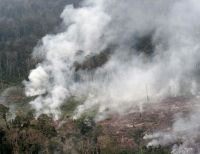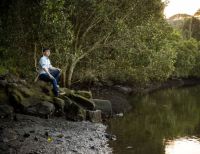
Professor Josh Cinner (left) discussing study results with a clan chief in Muluk village, Karkar Island, Papua New Guinea.
Professor Cinner’s colleague at James Cook, Distinguished Professor Bill Laurance, said roads serve important functions, but without effective planning and law enforcement they can unleash a Pandora’s box of environmental ills and societal challenges.
“Informally or illicitly constructed ‘ghost roads’ can be bulldozed tracks in logged forests, roads in palm-oil plantations and other roads missing from existing road datasets for various reasons,” he said.
“They’re being constructed by a range of people, including legal or illegal agriculturalists, miners, loggers, land grabbers, land speculators and drug traffickers.”
Professor Laurence said the researchers discovered 3 to 6.6 times more roads in the areas studied than were shown in leading global-road datasets – aligning with findings from earlier studies in other developing nations such as Cameroon and the Solomon Islands and from the Brazilian Amazon.
“By sharply increasing access to formerly remote natural areas, unregulated road development is triggering dramatic increases in environmental disruption due to activities such as logging, mining and land-clearing.
“Across our study area, road building almost always preceded local forest loss, and road density was by far the strongest correlate of deforestation out of 38 potential biophysical and socioeconomic variables,” said Jayden Engert, a doctoral student at James Cook University and lead author of the study.
According to Professor Laurance, proliferating roads are probably the most important direct threat to tropical forests globally.
“There are some 25 million kilometres of new paved roads expected by mid-century and 90 percent of all road construction is happening in developing nations, including many tropical and subtropical regions with exceptional biodiversity.
“Worryingly, our new findings show that the extent and length of roads in our study area are severely underestimated, with many roads being out of government control. Nature is the big loser.”
Professor Cinner said: “A positive finding from our paper is that areas that are protected in the biodiverse study region, on average, have a lot fewer roads and associated deforestation.
“This was even after accounting for the fact that, for social and political reasons, protected areas can sometimes be relegated to locations that are poor for agriculture – places with steep mountains or swamps – which are under less threat from deforestation.
“We matched sites in protected areas to counterparts outside with similar environmental conditions and revealed that there were a lot fewer roads in the protected locations.”














